Full Survey Results: Labour Recovers, PN Unites, Undecideds Fade

Labour has recovered much of the ground it lost earlier this year, with the latest survey by pollster Vincent Marmarà showing the party now projected to win 51.7% of the vote and enjoy a 25,000-vote lead over the Nationalists if an election were held tomorrow. The findings, collected between 25th September and 1st October 2025, confirm that both Labour and PN have consolidated their bases, while the once-bloated undecided bloc is shrinking fast. The Nationalist Party, meanwhile, appears to have rallied around its new leader Alex Borg, whose appointment has injected fresh momentum and helped unify the party after months of internal unease.
The survey sampled 1,200 people aged 16 and above, reached via landline and mobile, matched to demographics and calibrated against the 2022 general election. With a 95% confidence level and a ±2.8% margin of error, it offers a robust snapshot. To account for refusals and undecideds, Marmarà applies the Multiple Imputation Technique – a statistical method that estimates how undecided or non-responding voters are likely to vote based on the profiles of similar respondents. This allows the figures to be adjusted into projections that reflect how people are likely to vote in practice rather than just how they respond in a survey.
Voting Intentions
Of the people who agreed to take part in the survey, 43.9% said they would be voting for the Labour Party, 37% the Nationalist Party and 2.2% ADPD. Those who said they would vote for another party amounted to 1% of all respondents, while 15.9% said they were still undecided. In February 2025, Labour stood at 38.5%, PN at 34.8%, ADPD at 2.5%, others at 2.4%, while a huge 21.8% of respondents were undecided.
Both Labour and the PN have therefore seen an increase in support since the beginning of the year as the number of undecideds has fallen sharply. There was a slight decrease in the number of people saying they would vote for ADPD or other parties. This trend is consistent with what usually happens as an election approaches — undecideds tend to shrink, with most voters gravitating back to their ‘natural’ party rather than shifting allegiance to smaller parties or new entrants.
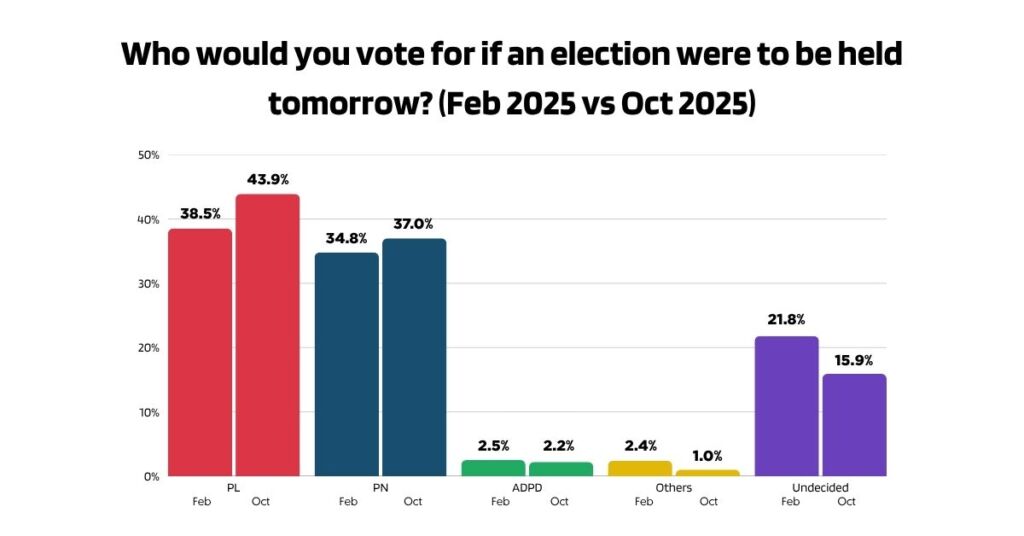
Both Labour and the PN strengthened their hold on their 2022 voters. Among Labour’s base, just 72.2% in February said they would vote PL again, with 12.1% undecided and 12.9% opting out. Labour has now pulled back support: 80.5% of 2022 voters say they would back the party, with undecideds falling to 10% and abstention halved to 5.9%.
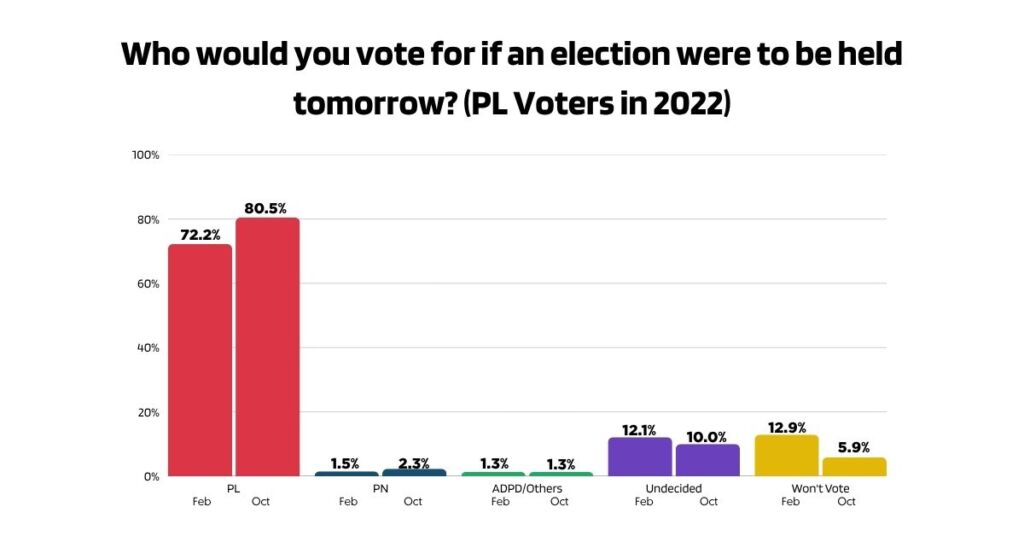
The PN followed a similar trajectory. In February it retained 80.5% of its 2022 voters, with 11.9% undecided and 6.2% abstaining. In the latest survey, PN retention has risen to 87%, undecideds have dropped to 9.8%, and abstention declined sharply to just 0.7%.
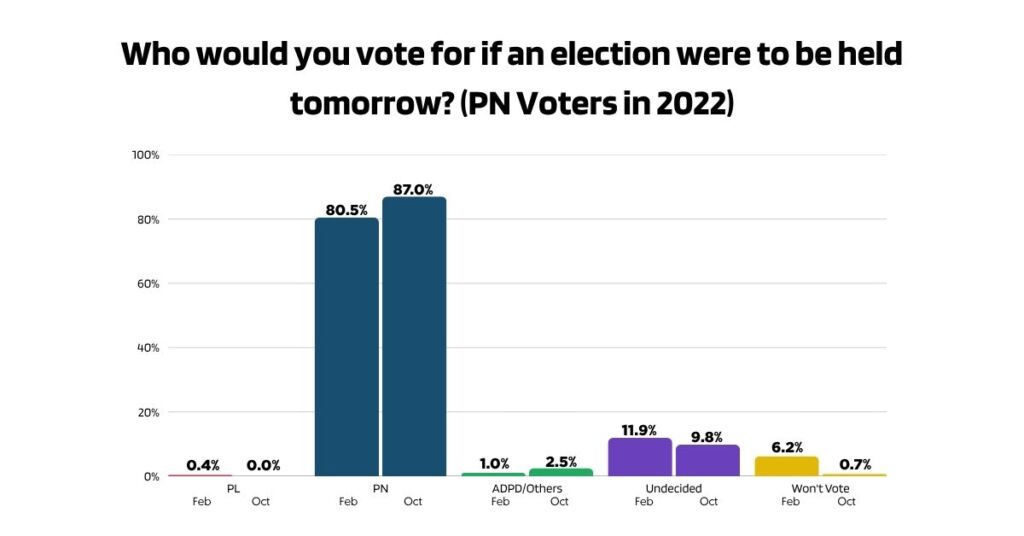
When the Multiple Imputation model is applied, the picture becomes clearer. In February, Labour was projected at 50.1% versus PN’s 44.2%, giving it a lead of around 15,800 votes. The latest results put Labour at 51.7% of the vote against PN’s 43.2%, with ADPD at 3.5% and others at 1.6% – a margin of roughly 25,000 votes.
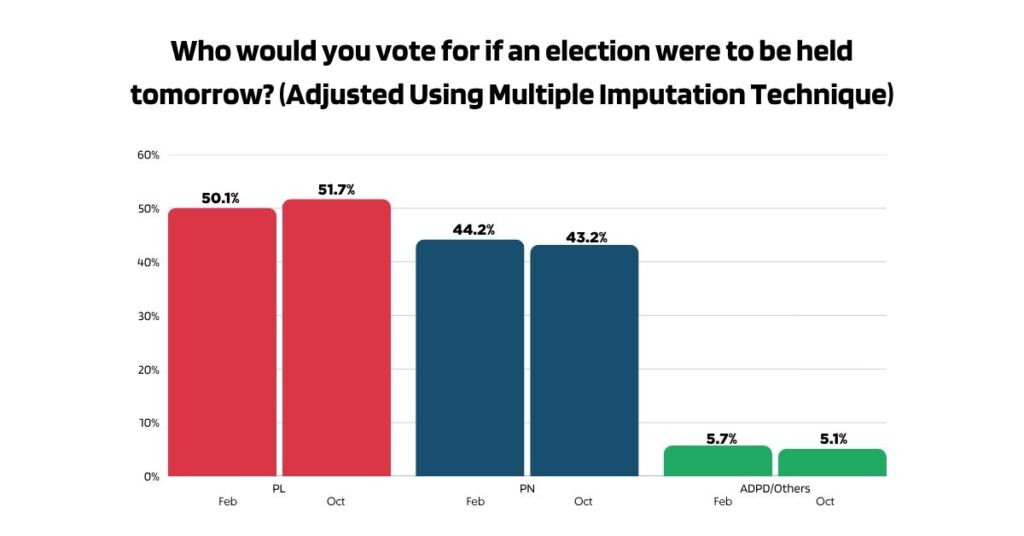
Leader Trust Rating
Leadership preferences reveal another angle. Newly elected PN leader Alex Borg trails Abela by eight percentage points, five points less than the 13-point lead Abela had over Bernard Grech. Borg was elected only a month ago, which means he has not yet been in the role long enough to face the setbacks or controversies that often drag down a leader’s rating. The survey, conducted just last week, captures him at a moment when the goodwill is still fresh. Whether his support grows or slips once the honeymoon fades remains to be seen. The data suggests that while Labour as a party has stabilised, Abela’s personal advantage is slimmer than it was earlier this year, and the PN may feel buoyed by having a leader who, for now, appears more competitive than his predecessors.

Among those who voted Labour in 2022, 83.6% say they trust Abela most, while 2.5% name Borg.
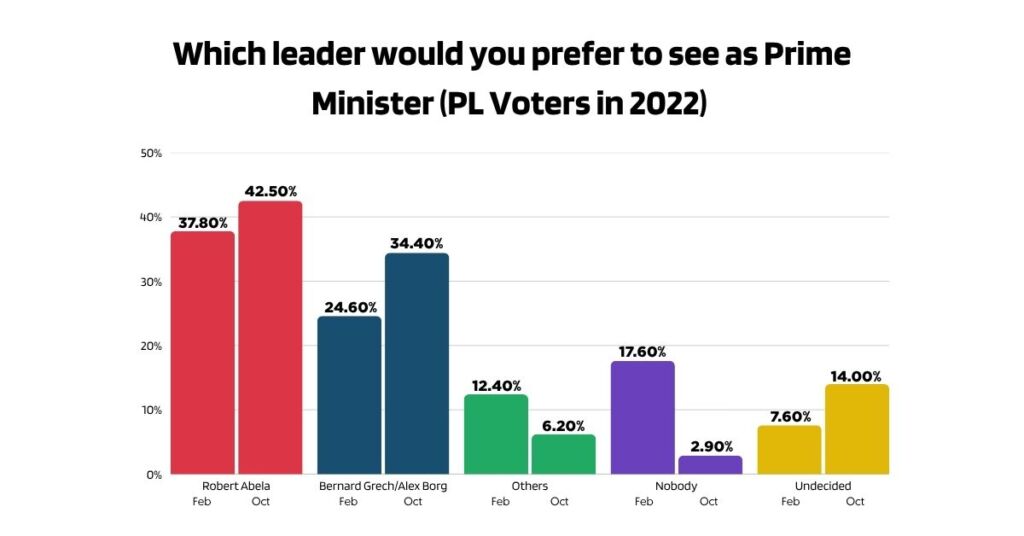
By contrast, among PN voters from 2022, 90.5% trust Borg, with just 1.9% choosing Abela. The rest either named “others,” said they were undecided, or declared they trusted nobody. This breakdown underlines a reality that has held true for years: Malta’s electorate remains deeply polarised, with each leader enjoying overwhelming support within their own camp but struggling to win the other side’s voters. In practice, this means that elections are decided not by persuading rival supporters, but by ensuring one’s own base turns out in large enough numbers.
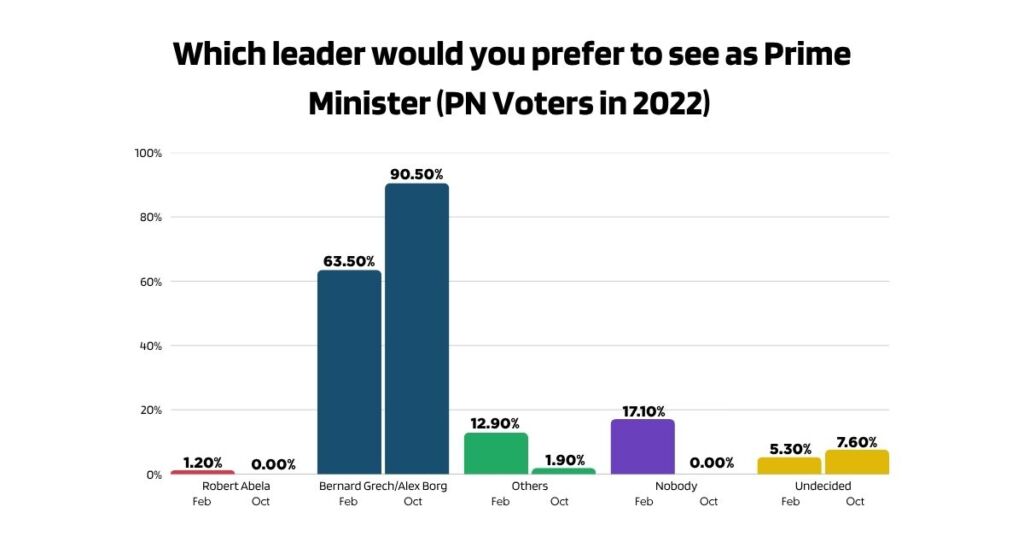
The bigger picture is that 2025 has been a year of consolidation. Labour began the year in a fragile position, with high abstention among its voters, but has now largely stemmed the bleeding. PN has also shored up its base, though its gains have been smaller. The undecided bloc that accounted for more than a fifth of voters in February has shrunk to around one in six, a clear sign that the electorate is preparing itself for the campaign ahead. For both major parties, the survey is encouraging: Labour has proved it can recover its wavering supporters, while PN has shown it can hold its own voters together under new leadership.
With rumours growing that Prime Minister Abela could call an election as early as the first quarter of 2026, Marmarà’s survey may well be the first evidence that Malta has already entered pre-election mode.
What do you make of these results?
